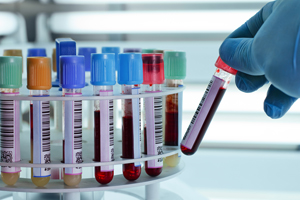
Short-term toxicity
A repeated-dose study was conducted to investigate the toxicity of AMIZATE® in Wistar rats (Shriram Institute for Industrial Research, 2008b). This study was conducted with consideration of the OECD Guidelines for the Testing of Chemicals Test No. 408 (OECD, 1998). Male and female Wistar rats (10/sex/group) were administered AMIZATE® at doses of 0 (control), 100 (low-dose), 500 (mid-dose), or 1,000 (high-dose) mg/kg body weight/day via gavage 5 days per week for 9 weeks (i.e., total exposure period of 45 days). Clinical observations were recorded daily, and detailed clinical examinations for signs of toxicity were conducted weekly. Food and water consumption by each animal was recorded daily, and body weights were measured weekly during the administration period. Urine samples were collected at the end of the study, and analyzed for the following parameters: volume, color, appearance, specific gravity, pH, protein, glucose, occult blood, epithelial cells, casts, bacteria, crystals, and white blood cells. Blood samples were collected prior to termination and were analyzed for hematology parameters (i.e., hematocrit, hemoglobin, erythrocyte count, total and differential leukocyte count, platelet count, and prothrombin time), and clinical chemistry parameters [i.e., glutamic oxaloacetic transaminase (GOT), glutamic pyruvic transaminase (GPT), alkaline phosphatase (ALP), blood glucose, blood urea nitrogen (BUN), total protein, total cholesterol, creatinine, albumin, and bilirubin]. All animals were then killed and their organs (i.e., liver, kidney, brain, gonads, spleen, adrenals, lung, heart, thymus, and epididymis) were removed, weighed, and subjected to macroscopic and microscopic examinations.
No mortality or signs of toxicity were reported in any test group. No significant differences in body weights, food and water intake, urinalysis, hematology, clinical chemistry, or absolute and relative organ weights were reported in any test group compared to the control groups. Upon gross necropsy and histopathological examination, several changes were reported in the lungs, including hemorrhaging in one male animal of each group (including the control), hemorrhagic foci in 2 high-dose females, and minimal focal interstitial pneumonia in 2 control and 2 high-dose animals of each sex. These microscopic and macroscopic findings were considered by the authors to be incidental as they commonly occur in this strain of rats and also were observed in the control group. Under the conditions of the study, oral (gavage) administration of up to 1,000 mg/kg body weight/day of AMIZATE®, the highest dose tested, did not result in any observable toxic effects in male and female Wistar rats. Therefore, the no-observed-adverse-effect level (NOAEL) is concluded to be 1,000 mg/kg body weight/day, the highest dose tested.



